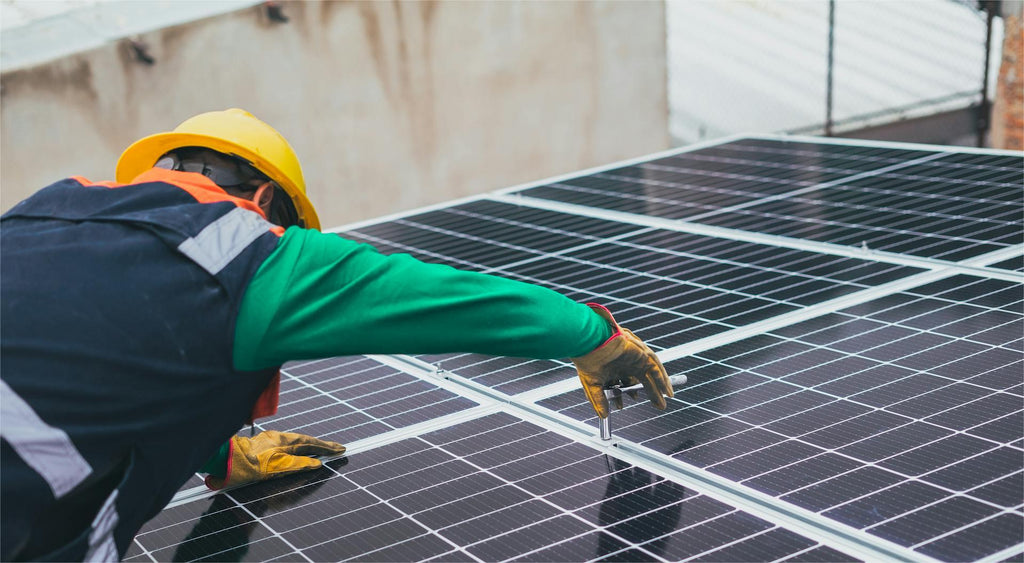Unlock the Secrets to Prolonging Your Solar Inverter's Life and Boosting Its Performance!
Solar inverters play a crucial role in solar energy systems, acting as the heart that converts the direct current (DC) generated by solar panels into alternating current (AC) for household use. Their efficiency directly impacts your energy savings and overall system performance. However, many users overlook the importance of regular maintenance, leading to common issues like reduced efficiency and premature failure. This article aims to provide you with actionable tips for proper solar inverter upkeep, helping you enhance both the longevity and performance of your solar energy system.

Understanding Solar Inverters
Solar inverters are essential components of solar power systems, responsible for converting the DC electricity generated by solar panels into AC electricity that can be used in homes and businesses. There are several types of inverters, including string inverters, which connect multiple solar panels in series, and microinverters, which are installed on each panel to optimize performance. Understanding the basic components of an inverter—such as the power electronics, control systems, and cooling mechanisms—is vital for effective maintenance. A well-functioning inverter ensures that you maximize the solar energy harnessed, thereby reducing your electricity bills and contributing to a more sustainable environment.
Top 10 Tips for Solar Inverter Upkeep
Tip 1: Regular Cleaning
Keeping your solar inverter clean is essential for optimal performance. Dust, dirt, and debris can accumulate over time, potentially hindering its functionality. It's advisable to clean your inverter every few months, using a dry cloth to wipe down the exterior and removing any obstructions from around the unit. Avoid using water or harsh chemicals, as these can damage the equipment.
Tip 2: Monitor Performance Regularly
Regularly checking your inverter’s performance metrics is crucial for early detection of potential issues. Most inverters come with monitoring systems that provide real-time data on energy production and efficiency. Look for significant drops in performance or error codes, as these can indicate problems that require immediate attention.
Tip 3: Check for Overheating
Overheating can severely affect the lifespan and efficiency of your inverter. Ensure that your inverter is installed in a well-ventilated area, away from direct sunlight and heat sources. If you notice that the inverter feels excessively hot to the touch, consider enhancing airflow around the unit or consulting a professional for advice.
Tip 4: Inspect Electrical Connections
Regularly inspecting all electrical connections is vital for safety and performance. Ensure that all connections are secure and free from corrosion. Loose or corroded connections can lead to inefficiencies and potential hazards. Consider having a qualified technician check these connections at least annually.
Tip 5: Update Firmware Regularly
Firmware updates can significantly enhance the performance and security of your inverter. Check your inverter's manufacturer website for any available updates and follow the instructions to install them. Regular updates can prevent vulnerabilities and improve the efficiency of your system.
Tip 6: Ensure Proper Environment
Solar inverters thrive in stable environmental conditions. Ideally, they should be installed in a shaded area with good airflow. Avoid harsh environments such as extreme humidity or dust-prone areas, as these can compromise the inverter’s functionality and longevity.
Tip 7: Schedule Professional Inspections
Having your inverter checked by a professional periodically can prevent minor issues from escalating into major problems. Schedule an inspection at least once a year to ensure everything is functioning correctly and to receive expert advice on any necessary maintenance.
Tip 8: Keep an Eye on the Warranty
Understanding your inverter’s warranty terms is crucial for maintaining your investment. Many warranties require specific maintenance procedures to remain valid, so familiarize yourself with these requirements to avoid any surprises in case of a malfunction.
Tip 9: Educate Yourself on Inverter Technology
Staying informed about the latest advancements in inverter technology can help you make better maintenance decisions. Read up on your inverter model and understand new features or common issues that others have encountered. This knowledge can empower you to take proactive steps in your maintenance routine.
Tip 10: Prepare for Extreme Weather
Extreme weather can pose significant risks to your solar inverter. To protect it from severe conditions, consider installing protective covers or ensuring it is mounted in a sheltered area. Additionally, after a storm, inspect your inverter for any damage and consult a professional if you notice anything unusual.
Essential Takeaways for Effective Maintenance
Maintaining your solar inverter is essential not only for its longevity but also for the overall efficiency of your solar energy system. By following these ten tips, you can help ensure that your inverter operates at peak performance for years to come. Regular upkeep and vigilance are key—so make these practices a part of your routine. Embrace the responsibility of caring for your solar system, and enjoy the benefits of renewable energy with confidence and peace of mind.





